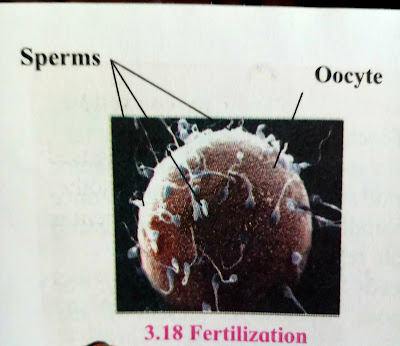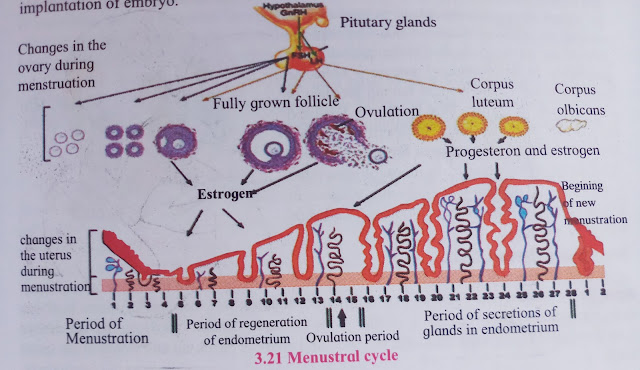E learning SSC, Short notes, Science, SSC maharashtra state board, result, easy way to learn, lesson learn, CBSC, online study, 10th Class shorts point, ssc exam point,10th class science 2 tips
Monday, June 29, 2020
E-Learning SSC Science 2 Notes : Environmental Management System Notes 2020
Environmental Management System Notes 2020
Chapter - 4.0
Environmental management
Ecosystem:-
- Ecosystem is formed by biotic factors and their interaction with each other.
- Each factor plays very important role in the ecosystem.
- Herbivores - Deer, goat, sheep, cattle, horses, camels etc. feed upon producers.
- Predators – Lion and Tiger.
- Caterpillars and termites, insect are responsible for cleaning the environment
 |
| environmental |
Relation between Environment and Ecosystem:-
- Physical, Chemical and biological factors affecting the living organisim in any possible way is collectively called as environment.
- Environment is the condition in surrounding.
- It includes biotic, abiotic natural and artificial factors.
- Main type are – Natural environment
- Natural environment consist of air, atmosphere, water, land, living organism.
- The science that deals with the study of interaction between biotic and abiotic factors of the environment is called as ecology.
- Environmental balance is maintained through continues operation of
- Natural cycles like water cycle, carbon cycle, gaseous, nitrogen cycle, oxygen cycle.
Environmental Conservation:-
- Unnecessary and
unacceptable change in the surrounding environment
due to natural events or human activities is called as environment Pollution. - Types of pollution:- Air, Water, sound, soil, thermal, light pollution.
- Environmental conservation has become the need of an hour.
- Radioactive Pollution:- UV and IR radiations are natural radiation.
- X-rays and atomic energy plants are artificial radiations.
- Effects of radiation are:
1) Cancerous ulceration
2) Tissue in the body are destroyed.
3) Genetic changes occur.
4) Vision is adversely affected.
Need of Environment Conservation:-
- Large scale participation of the people in environment conservation is required.
- Positive attitude and affection towards environmental should be inculcated among the children since childhood.
Environmental Conservation Our Social Responsibility:-
- There is interrelationship between human and environment.
- Human utilized all the natural resources as much as possible.
- Human itself only can conserve and improve the quality of Nature.
Environmental Conservation and biodiversity:-
- Biodiversity is the richness of living organisim in nature due to presence of living organisim in nature due to presence of varieties of organisims, ecosystem and genetic variation within a species.
- Biodiversity occurs at three different levels.
B) Species diversity .
c) Ecosystem diversity.
Classification of threatened species:-
1) Endangered Species.
2) Rare Species.
3) Vulnerable Species.
4) Indeterminate Species.
< chapter - 3.2 - Life Processes class 10 solutions 2020
Saturday, June 27, 2020
Life Processes class 10 solutions 2020
Chapter - 3.0
Part - 2
Life Process in Living Organisms Part – 2
Sexual Reproduction:-
Sexual reproduction always occurs with the help of two germ cells.
1 Female Gamete
2 Male Gamete are those two germ cells.
1 Gamete formation:- Gametes are formed by the meiosis. In meiosis, chromosome number is reduced to half Hence haploid gametes are formed.
2 Fertilization:- A diploid zygote is formed in this process by union of haploid male and female gamete.
- Embryo develops to from new individual
- Male parent and female parent are involved in this type
- Diversity in living organisms occurs due to genetic variation.
- Genetic variation help the organisms to adjust in changing environment
A – Sexual Reproduction in plants:-
- Four floral whorls as calyx, corolla, androecium and gynoecium.
- They perform the function of reproduction.
- Androceium present – Male flower.
- Gynoecium present – Female flower. (eg. Papaya )
- Flowers having stalk – Sessile
- Androecium male whorl – stamens.
- Gynoecium female whorl – carpel
- Pollen grains transferred to the stigma (Pollination)
- Pollen tube carries male gametes
- Pollen tube reaches Embryo sac via style.
- Male gametes units with egg cell to from zygote.
- Two nuclei participate in this process is called double fertilization.
B – Sexual reproduction in Human being:-
- Men have XY Sex Chromosomes.
- Women have XX chromosomes.
- Reproductive system with specific organ develops in the body of men and women due to sex chromosomes
2) – Human female reproductive system.
Gamete formation:-
- Sperm and ovum are formed by meiosis.
- Sperm are produced in testes of men from maturation till death
- While in female and oocytes mature every month from maturity up to the age of menopause – 45 years of age
Fertilization:-
- Formation of zygote by union of sperm and ovum is called as fertilization.
- Journey by the route of vagina – uterus – oviduct.
Development and Birth:-
Menstrual Cycle:-
- Female reproductive system undergo changes at puberty at the interval of every 28 – 30 days.
- These repetitive changes are called as menstrual cycle.
- It is a natural process controlled by four hormones.
Four Hormones –
- Follicle Stimulating hormone (FSH)
- Luteinizing hormone (LH)
- Estrogen
- Progesterone
Reproduction and Modern Technology:-
- In Vitro Fertilization (IVF)
- Surrogacy
- Sperm Bank /Semen Bank
- Two embryos develop simultaneously in the same uterus.
- Thus two off springs are delivered simultaneously
- There are two types of twins
- Monozygotic twins and dizygotic twins.
Life Processes class 10 solutions 2020
Chapter - 3.0
Life Process
in Living Organisms Part – 1
Part - 1
Life Process:-
- Nutrition
- Respiration
- Excretion
- Sensation
- Response
Reproduction:-
Formation of new organisms of same species by earlier existing organisms is called as reproduction
Reproduction two methods:-
A ) Asexual Reproduction
B ) Sexual Reproduction
A ) Asexual Reproduction in unicellular organisms.
1 Binary fission:- Prokaryotes (bacteria), Protists ( Amoeba ) paramoecium, Euglena, etc. and eukaryotic cell organelle like mitochondria and chloroplast perform asexual reproduction by Binary fission.
- Simple Binary fission takes place in Amoeba because it divides in any plane due to lack of specific shape
- Paramoecium divides by transverse binary fission
- Euglena by longitudinal binary fission
2 Multiple fission:-
Asexual reproduction by multiple fission is performed by Amoeba
- Formation of pseudopodia is stop due to lack of food
- Amoeba or protest is called as cyst
3 Budding :- Asexual reproduction occurs by budding in yeast
Yeast all is called as parent cell
B ) Asexual Reproduction in Multicellular organisms.
1 Fragmentation:-
The body of organisms break up into many Fragments and each fragment starts to live as an independent new organisms
eg:- Spirogyra, Sycon
2 Regeneration:- Planaria breaks up its body into two parts and there after each part regenerates remaining part of The body and new Planaria are formed This is called regenerates
3 Budding:- Hydra under Favorable conditioner an out growth is formed by repeated division of regeneration is called as bad.
4 Vegetative Propagation:-
Reproduction in Plants with the help of vegetative parts like root, stem, leaf and bud is called vegetative Reproduction
5 Spore Formation :- Spores germinate in moist and warm place and new fungal colony is formed.
English Grammar Std 1st - 5th Singular and plural Nouns | Basic English grammar Singular and plural Nouns
English Grammar Std 1st - 5th Singular and plural Nouns | Basic English grammar Singular and plural Nouns ONE AND MORE THAN ONE ...

-
Chapter - 5.0 Towards Green Energy Energy and use of energy :- We need energy in different for forms diverse types of works. Energy that...
-
10th Class Science 2 Animal Classification Short Notes Chapter - 6.1 < Chap...
-
Class 10 Revision notes Chapter 9 | Social Health short Notes Chapter 9 Factors affecting the Social health Class 10 Revision notes ...
-
Class 10 Science chapter 10 short notes | Disaster Management short Notes Chapter 10 Disaster Management Disaster:- Dangerous e...
-
10 th Class Chapter - 8 CELL BIOLOGY AND BIOTECHNOLOGY Chapter - 8.2 ...





















